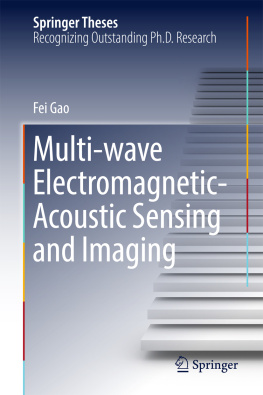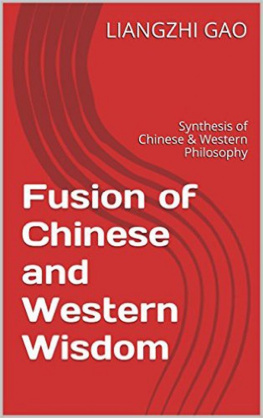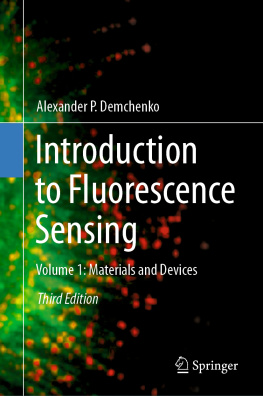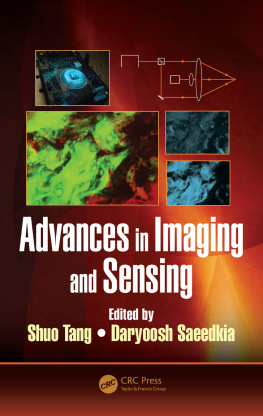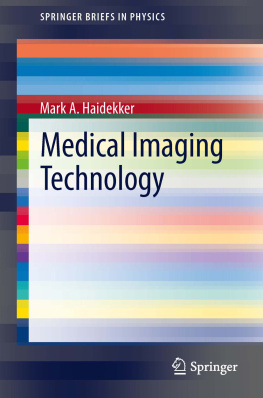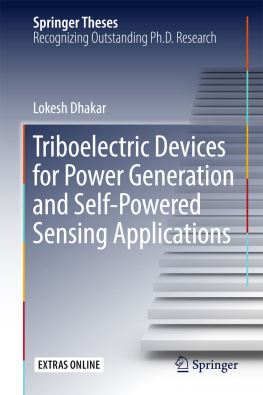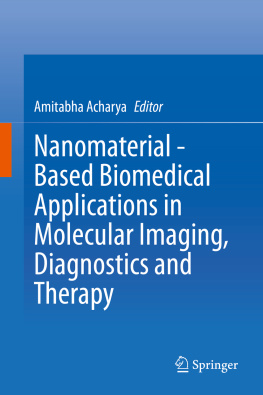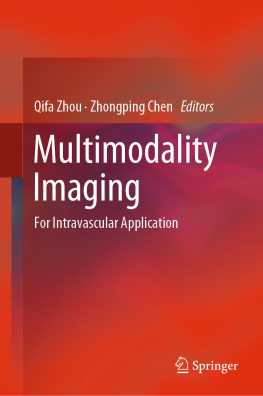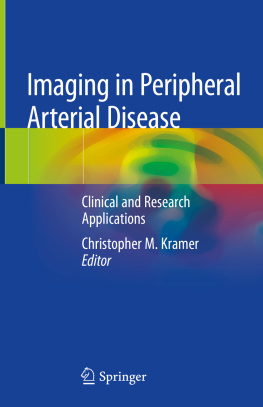In this section, background about both single-wave and multi-wave biomedical imaging modalities is briefly introduced to give an overview of this research area.
1.1.1 Single-Wave Sensing and Imaging
Single-wave sensing and imaging modalities refer to the imaging techniques that utilize only one kind of physical wave, mainly including EM wave (Gamma-ray PET, X-ray CT, optical imaging, microwave radar imaging, magnetic resonance imaging) and acoustic wave (B-mode ultrasound, Doppler color ultrasound, elastography). Single-wave imaging modalities have dominated the biomedical diagnostic research and industry for more than one century since first X-ray picture taken in 1895. Although tremendous progress has been achieved, there are still some fundamental limits about the single-wave imaging modalities, e.g. wave diffraction and diffusion. Here several major single-wave imaging modalities are introduced below to show their advantages and disadvantages.
1.1.1.1 Optical Imaging
Optical imaging refers to the imaging using light ranging from ultraviolet, visible to infrared light []. Optical imaging could provide high spatial resolution for surface investigation due to the tight optical focusing limited by optical diffraction, and high specificity due to distinct optical absorption spectra of different types of molecules. Unfortunately, accurate optical focusing inside deep scattering medium (e.g. biological tissues) is a long-standing challenge due to the optical diffusion limit, limiting its major applications to surface investigation (<1 mm depth). Although some emerging optical imaging modalities (e.g. multi-photon optical microscopy, optical coherence tomography, diffusion optical tomography) are pushing the image depth to cm range, they are still suffering high complexity, high cost and degraded spatial resolution in deep tissue.
1.1.1.2 Microwave Imaging
Microwave imaging originates from the military radar system, which is based on transmitting short pulse (~ns) microwave signal and receiving the reflected microwave signal from the object. Its potential for biomedical imaging applications have been explored in recent years majorly for breast cancer detection []. Although microwave could penetrate much deeper than light, its longer wavelength limits its spatial resolution to mm range even after applying advanced beamforming techniques.
1.1.1.3 Ultrasound Imaging
Ultrasound imaging is based on ultrasound wave with hundreds of kHz to several MHz frequency [], rather than EM wave in optical and microwave imaging. B-mode ultrasound imaging explores the acoustic impedance mismatch by transmitting pulse ultrasound signal and receiving pulse-echo reflected signal. High resolution image in deep tissue could be acquired due to the much less (1000 times) acoustic scattering compared with optical imaging. However, ultrasound imaging suffers low image contrast and no molecular specificity, which limits its applications to anatomical imaging with no functional information.
1.1.1.4 Other Kinds of Single-Wave Imaging
Beyond the three kinds of single-wave imaging modalities introduced above, there are some other types of imaging modalities, such as magnetic resonance imaging (MRI) that transmits and receives alternating magnetic field, elastography that images the stiffness of the biological tissues, and positron emission tomography (PET) that detects pairs of gamma rays. All these single-wave imaging modalities are exploring the property of one type of physical wave, which cannot meet the stringent requirements (high spatial resolution, high image contrast, deep penetration, molecular specificity, real time, low cost, etc.) in modern biomedical imaging applications.
1.1.2 Multi-wave Sensing and Imaging
Multi-wave sensing and imaging modalities refer to the imaging techniques that utilize two or more different types of physical waves, typically EM wave and acoustic wave, to achieve superior imaging performance by combining the merits of them. Multi-wave imaging modalities, mainly including photoacoustic imaging, microwave/magnetic-induced thermoacoustic imaging, ultrasound-optic tomography and so on, have attracted dramatically increasing research interest in recent years. By taking advantages of the high specificity of EM wave and high spatial resolution of acoustic wave in depth, these multi-wave imaging modalities have been explored in many promising biomedical applications to provide both anatomical and functional information in deep tissue. Here several typical multi-wave imaging modalities will be introduced below.
1.1.2.1 Light-Induced Thermoacoustic Imaging (Photoacoustic Imaging)
Light-induced thermoacoustic imaging, usually called photoacoustic imaging, is a emerging multi-wave imaging modality based on photoacoustic effect [].
1.1.2.2 Microwave-Induced Thermoacoustic Imaging
Similar with photoacoustic imaging mentioned above, microwave-induced thermoacoustic imaging (MITAI) is based on pulsed (or intensity modulated) microwave illumination in the range of hundreds of MHz to several GHz. After absorption of the microwave energy, thermoacoustic wave is induced and detected by ultrasound transducer for image reconstruction. MITAI integrates the high image contrast of dielectric properties based on microwave absorption and high spatial resolution based on acoustic detection, showing promise in some biomedical applications, such as breast cancer and brain imaging [].
1.1.2.3 Magnetically Medicated Thermoacoustic Imaging
Inspired by the laser and microwave induced thermoacoustic imaging above, it is expected that thermoacoustic signal should also be induced by pulsed magnetic illumination, which is firstly reported by Feng et al. of our group in 2013 []. By pumping large AC current into a resonance coil, AC magnetic field is induced around the coil, which could further induce electrical field in a conductor (e.g. a metal strip). Then joule heating inside the conductor could generate acoustic wave based on thermoelastic expansion. Magnetically mediated thermoacoustic imaging could provide deeper penetration than laser and microwave induction, showing the potential for human whole-body imaging like MRI.
1.1.2.4 Other Kinds of Multi-wave Imaging
Except the imaging modalities mentioned above, there are some other multi-wave imaging modalities, such as Ultrasound-optic tomography (UOT) based on ultrasound modulation of light scattering, magnetoacoustic tomography with magnetic induction (MATMI) based on Lorenz force generated acoustic wave under permanent magnet, magnetic resonance elastography (MRE) based on MRI tracking of mechanical shear wave, and so on. All these multi-wave imaging techniques are combining the merits of two kinds of physical wave to achieve better image performance.

